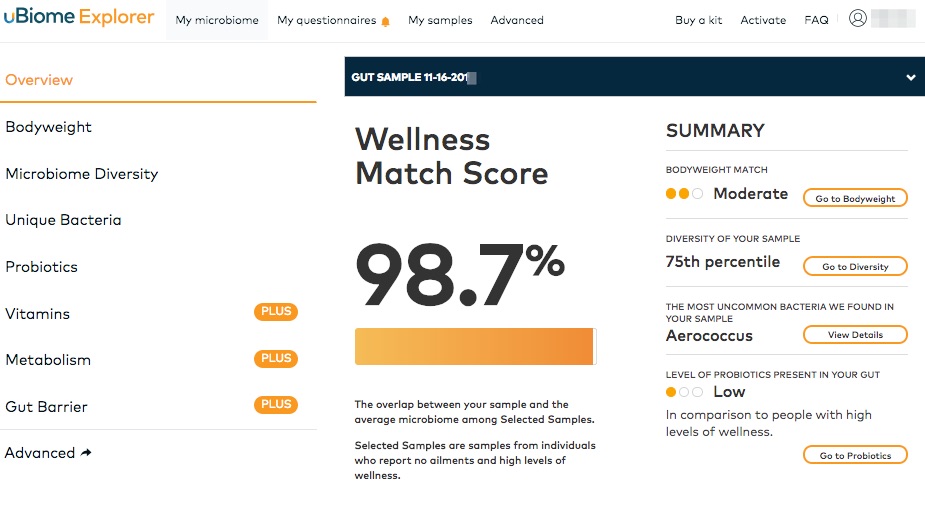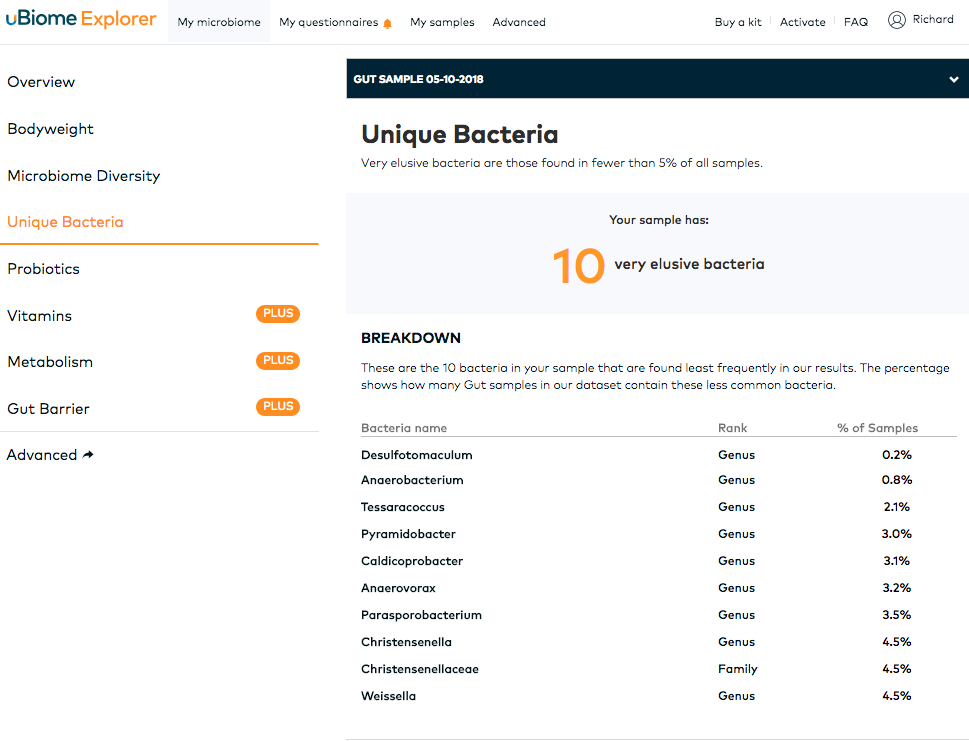8.1 Find more details in your uBiome results
Once you’ve received your uBiome results, the first page to visit is the uBiome Explorer. Here you’ll see the “My microbiome” tab ( Figure 8.1) which provides a very high-level summary of your microbiome. If this is your first time here, go ahead and breeze through this page, but just ignore most of the conclusions. As we’ll learn, scientists have barely scratched the surface of what we will eventually understand about the microbiome, so think of this page as a teaser – a hint of the potential. If your results show something you didn’t expect, say on diversity or body weight, don’t worry: it almost certainly just means that the Insights pane is wrong about you. Later we’ll see how to pull out far more interesting and useful results.

Figure 8.1: The ‘My microbiome’ page provides a high-level view of what uBiome thinks is most actionable about your microbiome.
The one part of the Insights page that you should take seriously is the section called “Unique Bacteria”. These are microbes found in me but rarely in other people. In fact, fewer than 5% of the general population tested positive for these bacteria. (Figure 8.2)

Figure 8.2: My sample is one of a tiny few that have these microbes
Of course, your natural first question is to wonder what these bacteria do? Do these microbes somehow relate to my own health condition? Because they’re so rare, you’ll probably find that an internet search comes up empty.
For example, look at the first result: Desulfotomaculum. I’m lucky that there’s a Wikipedia entry on this microbe, which notes that it is associated with canned food spoilage. Now that I think about it, I did eat some canned food around the time that I took this sample; maybe I was contaminated?
But look at the third one on the list: Tessaracoccus. Here, the Wikipedia page simply tells the physical and chemical characteristics of the microbe, which might be useful to a laboratory scientist, but means nothing to me.
For each of the rare microbes on this list, what I really want to know is something about the other people who have it. The Personal Science site lets me find that information.
[Insert instructions for how to look up other PSI users with this microbe]